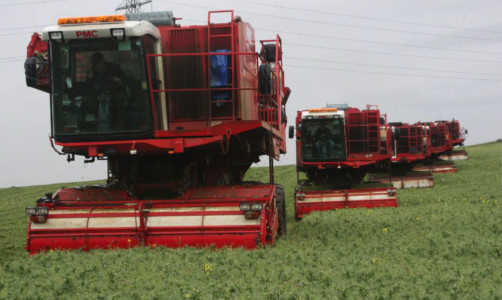“Greening” is already part of the Common Agricultural Policy vocabulary, but before long it will move from a concept to something with the capacity to bite hard into farm finances.
Defined as “agricultural practices beneficial for the climate and the environment”, these greening measures will hardly be optional.
At an Andersons Farm Business Consultants seminar in Edinburgh this week the company’s Graham Redman warned that failure to comply with all the greening requirements would result in the loss of 30% of an individual’s Basic Payment Scheme payments.
This penalty might seem draconian enough but it only applies in 2015 and 2016 to allow the new CAP to hits its stride. After that the deductions are ratcheted up by an additional 20% in 2017 and 25% in 2018.
In other words, complying with the greening regulations will be a necessity for all but the foolhardy and very rich.
The only real exception will be on land farmed organically, according to Mr Redman. He told his audience of fellow consultants and agricultural professionals that crop diversification the so-called three crop rule would need to be carefully observed.
All farms with more than 30 hectares of arable land will need to have three crops in the rotation. All those with between 10ha and 30ha will need two crops.
Mr Redman said:“The precise definition of a crop is not completely clear, but it is likely to be crops of a different genera so wheat, barley, oats oilseed rape and potatoes would be classed as separate crops.
“Spring and winter plantings will be treated as separate crops, for example spring barley and winter barley.
“Fallow will be a crop type, as will temporary grass, we believe.”
It also seems winter wheat sown before the end of December will be one crop type and winter wheat sown after January 1 will be regarded as another type.
Permanent pasture is another area to watch. The EU has dictated the acreage of grass more than five years old should not drop to less than 95% of its area in 2015.
“This was originally proposed to operate at individual farm level, but it is now optional to operate it at national or regional level. It seems very likely that all parts of the UK will continue with national enforcement.
“A farm level test would be very restrictive and bureaucratic for farmers.
“There could be limits set if the national acreage of permanent grass falls, but I think this is unlikely. If the so-called Olympic podium system of payments is introduced, permanent grassland would attract the highest levels of support, and this could actually mean an increase in area,” he said.
The most contentious area of the greening regulations will centre on the necessity for Environmental Focus Areas. Each farm with more than 15 hectares of arable land will need to allocate 5% to the EFA scheme.
By 2017 this could increase to 7%.
It has been widely heralded in farming circles as the return of set-aside. But in reality the impact might be limited.
Landscape features such as trees and hedges can be included, as can buffer strips and short-rotation coppice.
Possibly of most interest to farmers, nitrogen-fixing crops can be included in the EFA. This would include peas and beans for vining or combining, and presumably clover.
To illustrate the effect Mr Redman used a fictitious 600 hectare arable farm growing 300ha of wheat, 150ha of winter oilseed rape, and 150ha of spring beans. It had only 13ha of landscape features. The farm met the requirement for three crops but needed 5% or 30ha designated as EFA.
Once the 13ha of landscape features were taken into account the EFA requirement was only 17ha, but this was easily taken care of by the 150ha of nitrogen-fixing beans. The result was no requirement for EFA. Many farms would be in this position, including grazing farms with low arable acreages, but there would be little room for complacency.
Farmers would need to do their calculations every year to make sure that they were compliant.
Otherwise the draconian penalties mentioned earlier would be applied.
